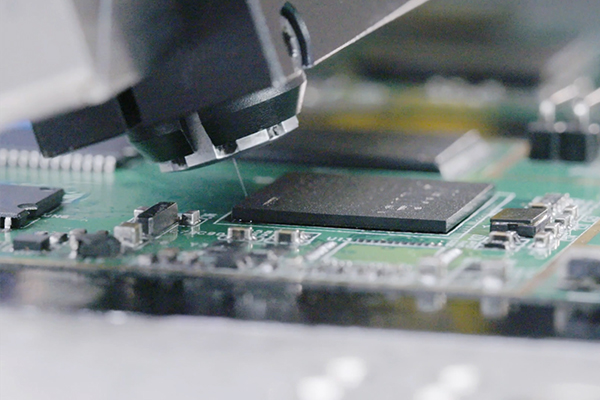
Underfill enhances the protection of electronic components and effectively improves resistance to thermal stress, vibration and shock.
Packages in the 3C industry are decreasing in size and become more dense with higher levels of performance, particularly in mobile electronics. Underfill has become a necessary process to enhance the reliability of electronic products. For processes such as Chip-Scale Packaging (CSP), Ball Grid Array (BGA), Package on Package (POP), underfill significantly enhances shock resistance. With a high number of fragile solder interconnects below a flip chip, reliability is only acheived by applying underfill to normalize the CTE differences between the PCB and component interconnects. Repeated temperture cycling is also enhanced with addition of underfill.
Underfill is widely used in the consumer electronics industry, such as smartphones, tablets, notebooks, etc., and associated Printed Circuit Boards (PCBs) and Flexible Printed Circuits (FPCs). The underfill process refers to dispensing a low viscosity fluid to flow beneath components like Ball Grid Arrays (BGAs), Chip-Scale Packages (CSPs), and Package on Package (POPs).
During the underfill process, controlling the amount of fluid, planning the dispensing path, determining waiting times, and optimizing dispensing angles are critical process parameters. Optomized parameters result in uniform flow below the device for an absence of voids or air bubbles, low wet-out areas.
Damage to chips or solder joints caused by drops or vibrations is highly probable in electronic products. Consumer electronics survive in tough environments. Manufacturers demand high levels of fluid repeatability and positioning accuracy to achieve characteristics such as dustproofing, moisture, drop and shock resistance, as well as tolerance to temperature extremes. With packages becoming more densly packed it creates additional demands on low wet-out and high positioning.
Axxon's non-contact piezo jetting system is electronically controlled and allows optomization acrosss a wide range of fluids. Repeatable setup for day-to-day volumetric repeatabilitiy is achieved through through the patented Calibration Process Jetting technology (CPJ). Axxon develops and manufactures their dispensing valves. Having manufacturing control enables tight quality control and continued technology developments. Optional features to enhance the dispense process include tilt/rotate valve mounting, synchronous dispensing, polluted nozzle detection and integrated AOI defect detection. Implementing a controlled dispense process is a peace of mine.